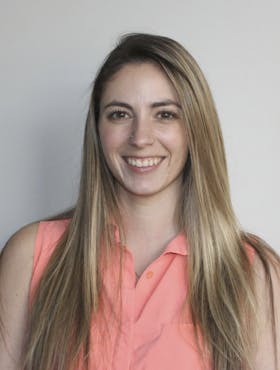Greater than 30% of people over the age of 60 have or will have dizziness.2 Not only is dizziness an unsettling feeling that can make one nauseated, it places a person at significant risk. Falls are the leading cause of accidental death in persons over 65 years.2 When a person has dizziness or vertigo, there is a 1.14 fold (114%) increase in the incidence of fractures with falling.3
Dizziness can also be very disabling for a person. As seen in the graphs below, dizziness is one of the leading causes of disability for persons above the age of 65.4 Dizziness can also contribute to other diseases. People who are dizzy are typically more fearful of falling. A person fearful of falling is more likely to reduce their mobility, staying in a chair or in bed. This results in deconditioning, frailty, and immobility, further increasing the risk of physical and mental illness.
Percentage of disability attributed to dizziness.

BPPV (Benign Paroxysmal Positional Vertigo)
- Most common cause of vertigo (63% people over 65 years with dizziness)1
- Makes you feel like the world is spinning around you or your head is spinning
- Most commonly occurs with laying down, rolling over in bed, and bending over
- Duration most commonly between 0-60 seconds, but can last up to 1-2 minutes
- For more information on BPPV and its treatment, please follow this link BPPV link
Vestibular Disorders
- Caused by:
- Infection
- Inflammation
- Disease
- Trauma
- Medication
- Severe vertigo that lasts for 24 hours to a few days
- Residual imbalance and dizziness
- Difficulty keeping balance in a dark room, on uneven surfaces, or when turning head quickly
Vestibular disorders can be treated with:
- Gaze stabilization exercises: eye and head/neck coordination exercises
- Habituation exercises: gradual exposure to movements
- Balance and gait training
Cervicogenic dizziness
- Dizziness can be a result of dysfunction of the neck. 83% of whiplash patients reported that dizziness began immediately after or within one week of their accident.5 Patients often complain of disequilibrium, lightheadedness, or “wobbly head.” Typically have neck pain and limited or excessive range of motion.
- This can be treated through manual therapy, strengthening, and proprioceptive training.
Concussions
- No two concussions are alike in presentation or recovery. Concussions can cause dizziness due to the central injury to the brain, injury to the vestibular organs, and/or injury to the neck. Each of these alone may cause dizziness symptoms, but with a concussion, all factors may be present.
- Concussions can be treated through vestibular rehabilitation, manual therapy, strengthening, proprioceptive training, and metabolic conditioning.
Resources:
- Chau AT, Menant JC, Hübner PP, Lord SR, Migliaccio AA. Prevalence of Vestibular Disorder in Older People Who Experience Dizziness. Front Neurol. 2015;6.
doi:10.3389/fneur.2015.00268. - Fernández L, Breinbauer HA, Delano PH. Vertigo and Dizziness in the Elderly. Front Neurol. 2015;6. doi:10.3389/fneur.2015.00144.
- Liao W-L, Chang T-P, Chen H-J, Kao C-H. Benign Paroxysmal Positional Vertigo Is Associated With an Increased Risk of Fracture: A Population-Based CohortStudy. J Orthop Sports Phys Ther. 2015;45(5):406-412.
doi:10.2519/jospt.2015.5707. - Mueller M, Strobl R, Jahn K, Linkohr B, Peters A, Grill E. Burden of disability attributable to vertigo and dizziness in the aged: results from the KORA-Age study. Eur J Public Health. 2014;24(5):802-807. doi:10.1093/eurpub/ckt171
- Treleaven J, Jull G, Sterling M. Dizziness and unsteadiness following whiplash injury: characteristic features and relationship with cervical joint position error. J. Rehabil. Med. 2003;35(1): 36-43.

Allie Lesh, PT, DPT, OCS, CMTPT/DN
Areas of Special Interest
- Orthopedics
- Vestibular
Alexandra (Allie) Lesh is from South Bend, IN and developed her passion for Physical Therapy and desire to help others following the rehabilitation she underwent for numerous knee surgeries. She studied Movement and Sport Sciences at Purdue University. After completing her undergraduate degree, she attended the University of Miami in Florida to pursue her Doctor of Physical Therapy and further utilize her undergraduate Spanish minor. While in physical therapy school, she expressed an interest in working with pediatric and orthopedic populations; further expanded through her clinical rotations at a children's hospital and outpatient orthopedic clinics. Following graduation in May 2019, she resided in Southwest Florida working in a private outpatient orthopedic clinic before packing her bags to move up to the mountains of Asheville, NC. She regularly attends indoor cycling classes outside of work and enjoys taking her dog, Bentley, on walks to explore new territory. If you have any recommendations of restaurants, trails, or activities to try in the area please let her know!

Allie Steinhoff, PT, DPT
- she/her
Areas of Special Interest
- Orthopedics
- Pelvic Health
- Gender Affirming Care
Allie has lived in WNC for most of her life. She earned her Bachelor of Exercise Science from Brevard College and her Doctor of Physical Therapy from Western Carolina University. As a health at every size (HAES) provider, Allie is passionate about inclusive and empowering care with the core belief that all bodies are good bodies. She prioritizes a holistic full body approach for treating pelvic health and orthopedic conditions for people of all genders. Allie is certified in the LSVT BIG protocol for individuals with Parkinson disease and is also a guest lecturer for Western Carolina University's Physical Therapy program in gender affirming, inclusive, & trauma informed care.
She enjoys weightlifting, reading, crocheting, all things nails, hair, and makeup as well as spending time with her husband, Jamar, and dog, Fiona Apple.

Ferris Fakhoury MS, PT
Ferris was born in a small town in southern Georgia near the Florida border. She received her BS in Physical Therapy from the Medical College of Georgia. After practicing for 12 years, she returned to academia and completed an advanced Masters in Human Movement Science from UNC Chapel Hill. Upon graduation, she accepted an appointment as Assistant Professor at the Medical University of South Carolina. While she enjoyed teaching, Ferris opted to return to the clinic to pursue a position in research and data collection at the Shriner's Hospital for Children in Greenville, South Carolina. In this position, Ferris developed educational programs for parents and clinicians as well as work as lead PT in the Motion Analysis Lab for 10 years.
Desiring a change in her career, Ferris left the Shriner's Hospital and opened a yoga studio in Asheville. During the next five years, Ferris, in addition to teaching yoga, made a transition from working with children to pursuing her interest in aging adults and began her journey toward working in pelvic health physical therapy and adult orthopedics. Today, Ferris is happy to work in a split position at Cornerstone and spends her week working in both orthopedics and pelvic health. Her goal as a therapist is to provide individualized care to all people and to use evidence-based care grounded in research.
When Ferris is not in clinic, you may find her in a hot yoga class, hiking, painting, or relaxing with a good book… and yes, Netflix.









